finance & global affairs _|_ Issue 27, 2024
The Power of Gold
Alan Ereira talks about his new book, which traces the relationship between human beings and this most precious metal over a period of 7,000 years


The Power of Gold
Alan Ereira talks about his new book, which traces the relationship between human beings and this most precious metal over a period of 7,000 years
Alan Ereira is an author, a historian and a documentary filmmaker who is perhaps best known for his work with the Kogi Indians in Columbia; his BBC film From the Heart of the World (1990) and subsequent book [2] conveyed their warning to us, the ‘younger brother’, about our destruction of the Earth (see our article). His new book, Gold: How it Shaped History,[1] brings together a prodigious amount of research on the role that gold has played in our lives, and the power that it has over us. It, too, conveys a warning, and at the same time presents a sweeping, global vision that gives a completely new perspective on the history of the world. Alan talked to Jane Clark and Peter Huitson by Zoom from his home in London.
 Jane: In Gold, you have basically rewritten the whole of human history from about 4700 BC to the present day – so nearly 7,000 years – from the point of view of our relationship with gold. It reminds me very much of a book by Amitav Ghosh which we reviewed a couple of years ago in the magazine, The Nutmegs Curse, [3] which traces the history of colonialism by looking at the role of the nutmeg. You ask the same sort of questions as he does: not just ‘how have we used gold?’, but also ‘what’s gold done to us?’.
Jane: In Gold, you have basically rewritten the whole of human history from about 4700 BC to the present day – so nearly 7,000 years – from the point of view of our relationship with gold. It reminds me very much of a book by Amitav Ghosh which we reviewed a couple of years ago in the magazine, The Nutmegs Curse, [3] which traces the history of colonialism by looking at the role of the nutmeg. You ask the same sort of questions as he does: not just ‘how have we used gold?’, but also ‘what’s gold done to us?’.
Alan: Yes, this is a new form of anthropology called ‘the new materialism’ that recognises the agency of non-human things in the world and the part they have played in our story. There are two ways this is happening now; one is in general history books that pick on a particular object – salt, for example – and the way it has shaped economies. But there’s also a way of simply relooking at the things we work with and saying: it’s not necessarily that we work with them; they also work with us. This applies to pottery, it applies to metals, it applies to all manner of things that we think are just inanimate objects, but which actually have agency in our lives.
Jane: So why did you decide to write about gold?
Alan: It was because of my relationship with the Kogi people in Columbia, who, as you know, I have worked with for over thirty years. The Kogi think that gold is really important, and at first, I had no idea why. My initial position was that if all the gold vanished from the Earth, what difference would it make? My assumption was that it would not make much difference at all. But they kept hammering on about it, and slowly I realised that human reactions to gold, the ways in which humans have behaved with gold, is incomprehensibly similar in places which have had no possible connection to each other as far as we can see.
We see the same things happening in different cultures, in different places, thousands of years apart, thousands of miles apart. The most obvious example is the creation of status symbols made out of gold. Royal regalia such as crowns, sceptres and orbs are found in tombs all over the world, in places which had no connection to each other at the time. So, what is going on? And that led me into the whole story of how gold has affected us throughout human history.
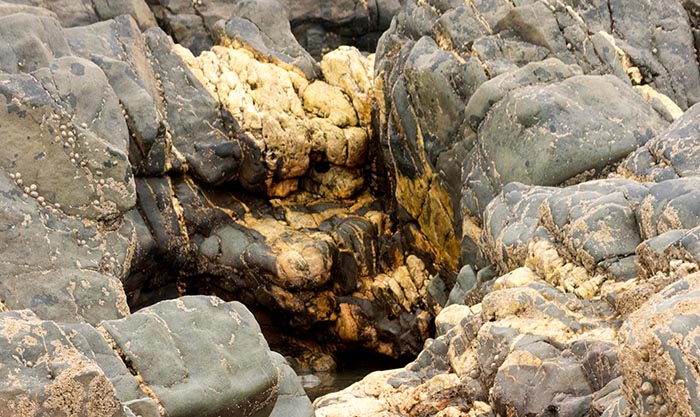
Seams of naturally-occuring gold in rock. Image: Paul Biggins [/] / Alamy Stock Photo
Gold as a Portal for Life
.
Jane: The main message that you convey is that the Kogis believe that gold as it occurs naturally is performing a special function in the world and should not be removed from the ground.
Alan: The Kogi regard gold as an essential source of vitality and believe that it is actually necessary for the Earth to be alive. This idea leads to interesting questions about the connection between material and non-material reality. In the Kogi’s understanding of creation, they perceive the world as something that existed first in a non-sensory form – effectively as a creation of consciousness – which then gets revealed to sensory perception in an act of withdrawal from that level of non-sensory consciousness. So for them, the physical world is an appearance – a manifestation – of the ideas that lie behind it. And this is actually a very sensible view because we know now that the world that we perceive ourselves as inhabiting is one that’s constructed within our own heads. For example, there are no such things as colours in reality, only things that give rise to colours in our minds. The same with sound, with texture and so on. So we live in a kind of authenticated hallucination, I suppose, is one way of looking at it.
Now, the problem for the Kogi is that if life doesn’t come out of the physical stuff – if life is something that exists in the cosmos at a non-physical level – how does it get here? There must be openings, gaps, or access points which enable life and death to happen in this realm. And for them, one of the most fundamental of these is gold, which has a non-physical as well as a physical existence. That is a kind of logical deduction on their part from the quite obvious fact that gold is unaffected by mortality. Gold does not die. It does not corrode or change over time because it doesn’t react with anything – except a special acid that we now know how to make. If it’s pure 24 carat, there is no way in which you can tell the age of a piece of gold because there are no markers in it that indicate its lifespan. One of the reasons that archaeologists love gold is simply that when they dig it up, it looks exactly the same as if it had never been put in the ground in the first place.
So gold has one foot in material reality, but it also has a pretty obvious connection to transcendental reality where there is no time. And so it is understood to be a kind of portal to what lies behind the authenticated hallucination that is our lives. The Kogis refer to it, for example, as the menstrual blood of the Earth. But when I ask them: what can you tell me about gold? they just keep saying, well, nothing really. Just that it is sacred. It is important. The Earth does not survive without it. They are very emphatic about this. And oddly enough, the European ancient world talked about gold in exactly the same way; I point out in the book that there are Roman writers, Pliny the Elder, for example, who say things very similar to the Kogis.
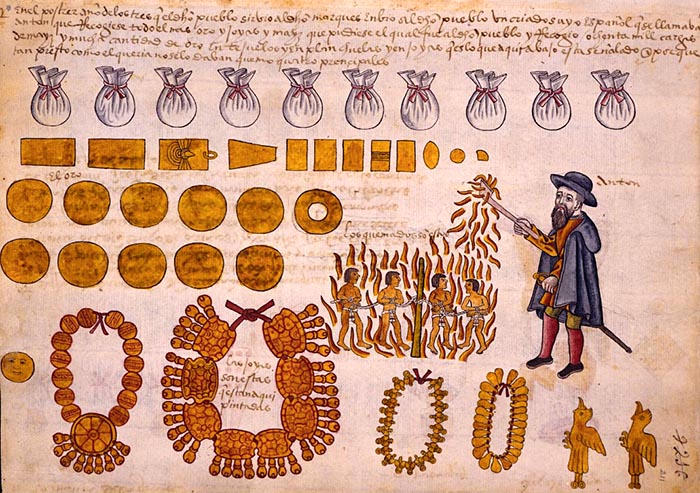
Gold as Value
.
Peter: So the Kogi’s main concern is that we should stop gold mining?
Alan: Yes. When they did the original film with me in 1990, they kept saying, you’ve got to stop the extraction. It’s really dangerous and the Earth is losing its vitality; this in itself will cause the Earth to die. But I’m afraid to say that since 1990, we have extracted more gold than was taken in the whole of our history up to the time they said that. And it does seem to me that there is a correlation between this and the speed of the changes in the vitality of the planet, which we call climate change. I’m not saying I have any notion of how that happens and the Kogi don’t discuss these things in the mechanistic terms that we use. But in a kind of modern version of Pascal’s wager [/], I do think that we should stop doing it until we’ve figured out what’s going on. Because we are running out of gold now. The gold mines are expected to run out within my children’s lifetime.
Peter: Even if we just look at the direct physical effects, you point out that the mining of gold is enormously damaging to the environment.
Alan: Modern methods of extraction use huge amounts of mercury and cyanide, and every ounce we get creates something like 20 tons of toxic waste. There are alternative methods that are less toxic, but the problem is compounded by the fact that a lot of mining is actually illegal. In Columbia, for example, about 70% of its output is from illegal sources – the mining is carried out by criminal gangs who control huge areas of the country.
Jane: This massive acceleration in gold mining is a bit of a puzzle, is it not? You point out that since 1971, the world’s economies have ceased to use gold as a standard for economic activity, so really we should not need it anymore. I know that gold is now an essential component of the circuitry of digital devices and so we have become dependent upon it in that way. But only tiny amounts – about 1% of all the gold extracted – are actually used in electronics. So why are we extracting it at such a rate?
Alan: I think it is highly likely that we don’t know ourselves. I think the fundamental reason is because we think gold contains value. I say in the book that the amount of gold in a country’s reserves is a measure of the size of its nightmares. So the building up of gold reserves is seen as a defence against collapse, which means that gold is being hoarded by countries that are very frightened. The biggest buyer in the first half of 2024 was Poland, and you can see why they would be scared right now. What’s hard to see is what use the gold is going to be to them.
Russia also built up huge gold reserves as fast as it possibly could before attacking Ukraine. And it’s very striking that this September, it announced that every day it would multiply its gold purchases by six over previous months. So it is building up a further big wall of gold, which it clearly sees as its armour in some way. Again, it is not clear to me what use all this gold will be to them, except that, perhaps, what they’re looking for is to be able to trade with countries that are prepared to ignore the dollar as a trading currency. But you don’t actually have to use gold for that; there are all sorts of other things you could use.
But the notion that gold contains immutable value is somehow enormously powerful. Of course, gold doesn’t actually have that value in itself; we attribute that to it without thinking, unconsciously.
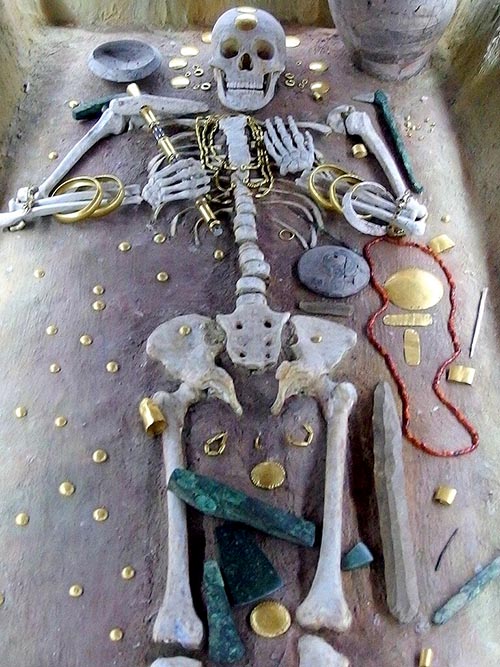
The oldest known gold artefacts. Modern Reconstruction of the tomb of ‘The Lord of Varna’ – an elite male burial site, c.4500 BC, discovered in Bulgaria in 1972. Image: Mark Ahsmann [/] via Wikimedia Commons
Gold In Human History
.
Jane: The story that you tell in the book goes way, way back to about 4,700 BC with the discovery of artefacts from an ancient civilisation at Varna in north-eastern Bulgaria, and continues up to the present day, covering a wide range of cultures and civilisations – ancient Babylonia, the Persian and Roman empires, the emergence of the west, the American gold rush, the French revolution, and much more. You develop the idea that gold has basically played two main roles in all these civilisations. On the one hand, it has been seen as the Kogi see it, as a portal between this world and eternity, which is why we find gold artefacts at burial sites, and it was often treated as sacred. In this role, it is hoarded – in tombs and temples, and in jewellery. And on the other, it has been used as coinage, and in this role it has gone into circulation and travelled all over the world.
Alan: Yes, and it’s quite extraordinary how time after time gold has affected the whole balance of power in the world. So one of the first things that I look at is Babylonian civilisation. We have an incredible set of price data from this time, in the form of tablets containing the astronomical diaries that were maintained in the temple of Marduk continuously every month from 625 BC to 72 BC. We haven’t got them all because some of them are broken, but we have enough to see what happened. What I do in the book, which as far as I know has not been done before, is to correlate this data with what was going on in the world at the time.
And I show that there are two really big price changes in that period. The first one happened when the Babylonians captured the Temple in Jerusalem in 586 BCE, and released much of the gold that was in the temple onto the market. The result was that the value of gold collapsed. Of course, nobody in the ancient world thought in those terms, at least not in the Middle East, but that is what happened. This meant that the value of silver rose significantly. Prices changed. The coin that everybody was using for large contracts was made from an alloy of gold and silver in the city of Sardis in a kingdom of Asia Minor called Lydia. Suddenly the silver in that coin became worth more than the coin, so in Sardis they started disassembling the coinage.
So the ruler of Sardis, who was a chap called Croesus – who we’ve all heard of because we still have the phrase ‘as rich as Croesus’ – had a river at the back of him which happened to be the world’s only source, as far as I know, of pure 24 carat gold. He said: ‘OK, forget that. I’m going to change the coinage over and produce pure gold and pure silver coinage.’ That’s the moment when we went on to the gold standard. We went on to it because of the looting of the Temple of Jerusalem. And that produced the next big change in prices. They stopped rising. The new coins did their job.
Jane: So this was the start of the idea of the monetary economy?
Alan: Yes, Herodotus says this is where the market was invented. It is where retail trade began.
Jane: But there are some cultures which didn’t go onto a gold standard. For instance, Persian civilisation before Alexander the Great. Gold was for them what you call ‘a transcendental representative of divinity or eternity’, and they saw it as sacred. They used it for the making of religious artefacts and didn’t use it as money at all.
Alan: The difference is that their economy was not based on trade. It’s interesting that China also didn’t take up gold in the same fundamental way as the areas further west. The material which served as the bridge to the transcendental in China for a very long time was jade, not gold. And we know that in the period of Marco Polo – that is, in the 13th century, when the Mongols were ruling – the Chinese were not traders. There was no class of traders in society. But they needed traders to bring things into the country, which is why people like Marco Polo were welcomed and given all kinds of privileges.
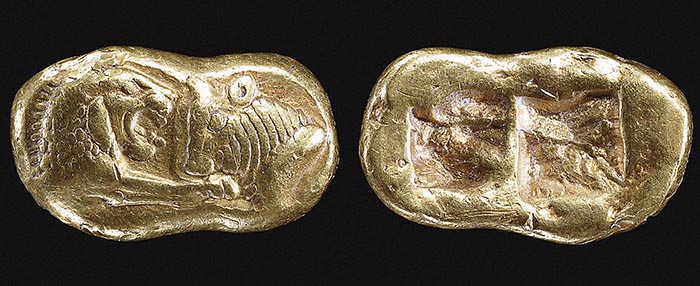
Putting Gold to Use
.
Peter: You look at the way that throughout history, caches of gold in temples and treasuries, or in newly discovered natural seams, have been suddenly put into circulation, and it is clear that it matters what is then done with it. For example, when Alexander the Great took over the Persian Empire and gained access to its treasuries, he became hugely gold-rich. But he put the wealth to use by building the network of cities which he established throughout his empire, and presumably, he also used it to power his conquests. This is in marked contrast to what the conquistadors did with the gold they plundered from South America, which they basically used to make the very elaborate icons we can still see in Spanish churches. In the end, this was disastrous for their economy.
Alan: The conquistadors did not understand what the Chinese pointed out a long time ago. Which is that if your money supply is simply increased without being put to use, it just decreases the value of the money. The Chinese developed an economic theory which was much more robust than anything that developed in the West until the 17th century. There’s a wonderful work called the Guanzi, which is a very, very old book. Nobody’s quite sure how old, but it probably goes back to the 7th century BCE and was still the standard economic textbook in Marco Polo’s time.
The argument of the Guanzi is that money isn’t stuff in itself. Money is the token that allows activity to take place. And what you have to do as a ruler is ensure that the supply of those tokens matches the level of activity. If you get it wrong, everything goes haywire. The Guanzi distinguishes between what we would call an inflationary and a deflationary economy – it calls them ‘heavy’ and ‘light’ economies. And it does it all wonderfully clearly.
This is why when Marco Polo arrived in China, he was told to hand over gold coins that he had brought with him for bits of mulberry bark which had the Imperial stamp on them. He had the idea that his coins had value in themselves, and so he thought this was a trick – a device to swindle him. But it wasn’t. It was just a very sensible implementation of the notion that money is a means of exchange rather than a substance containing intrinsic value.
The Spanish conquistadors, also, were convinced that gold itself contained value – a nonsensical idea which bewildered the indigenous people of America. The Spanish thought that possessing it made them rich, but all they did was press their economy into an everlasting, steady decline.
Peter: The contrast you make is with the British, the Dutch and the French, who used the gold that they plundered by putting it into production. They capitalised their economy, basically.
Alan: Yes. When the British got hold of the Brazilian gold in the 18th century, it was quite different because they used it to increase the amount of economic activity at home. So the gold was not really being treated as wealth; it was being used as in the Guanzi system as a token that allowed trade to take place. The more gold Britain got, the more trade and activity and commerce it was able to undertake. So the explosion of Britain as a great commercial power in the 18th century turns out to have been a direct result of the influx of gold from Brazil. But it was also because of the way in which that gold was used.
All this comes from the work of Nuno Palma [/], who is a professor of economics at the University of Manchester. He’s done some brilliant work uncovering all these connections, but until now, it’s entirely been within the academic community.
Peter: I was interested in what you say about the Industrial Revolution. According to your research, it was mints making gold coins that really started it off.
Alan: Yes, and I don’t know why this is not well known, as it’s so obvious when you go into it. Historians of the Industrial Revolution tend to say that it all started in Britain in the middle of the 18th century, but that story was written by people who identify industrialisation with coal, iron, and steam engines. In fact, the fundamental change happened in the 16th century, when the first factory was built with machines doing work that had previously been done by people. This was not making consumer goods like textiles, but it was a mint designed by German engineers – German mining engineers in Hall, Austria – to quite literally make money. They were producing silver coins called thalers, whose name later transmuted into the word ‘dollar’.
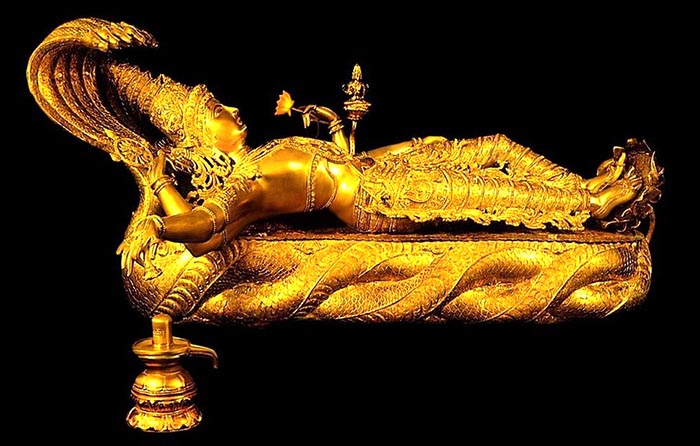
Pros and Cons of the Gold Standard
.
Jane: So basically, the advantage of adopting gold as a currency is that historically, it has allowed people to trade across their own borders – to undertake international trade.
Alan: Yes. What’s more, traditionally, as trade increased, the gold standard became more and more important because it’s easier to transport high values in gold than in silver or in fact, any other commodity. One shipload of gold is going to be seven or eight shiploads of silver. So as trading routes got longer, gold became ever more important as a way of dealing with very large undertakings. This is one of the things that happened in the Roman Empire, where they needed to pay entire legions in foreign lands such as Germany.
Jane: So what are the disadvantages of taking on gold as a currency?
Alan: Well, it is precisely the Guanzi argument that if the amount of our coinage, or whatever we are using as currency in circulation, doesn’t match up to the amount of trade being done, then we’re going to run into serious trouble. And over and over again in history, we see that this has been a problem. One reason is that you can’t hold on to gold very easily, unless you stick it into a gold reserve and leave it there and don’t touch it, in which case you’re not spending it so it’s completely dead and useless. Gold as currency moves all the time. If it’s not locked away, it’s spent. And when it’s spent, it travels.
So what’s happened throughout most of modern history is that the gold that has arrived in Europe has been sent further east – and by ‘modern’ I mean from the time of the Roman Empire onwards. Money/gold has been spent on the acquisition of useless things – luxury goods – and sent to places that want gold for quite other reasons. India in particular is a big collector, I have found. There is a section in the book on the Indian temples that have accumulated phenomenal quantities of gold going right back to the Roman period. Putting gold out of use is something that’s gone on in the East for an awfully long time.
So although the amount of gold in the world continues to increase year on year because it can’t decay or go anywhere, the amount of gold that’s accessible and being used does not go up. And if the rate at which it’s being put away exceeds the rate at which it’s coming in, which happens from time to time, there is an economic crisis in countries that are trying to use gold as their money. Then quite interesting things happen. For example, in the 19th century, the California Gold Rush happened at a point when the availability of gold as currency had gone right down. As a result, businesses were collapsing, trade was collapsing and economies were being strangled simply because they insisted on using gold as the currency. It led to crisis after crisis.
That particular problem was solved by the discovery of gold in California. But there have been other situations where countries have found different solutions. For instance, the French Revolution was really the result of France’s gold being taken away by Britain.
Peter: Because of the French supporting the war of independence in America?
Alan: Yes, they bankrupted themselves through that. They thought it would work out terribly well for them, but it tends not to be in the capacity of Europeans to understand economics very well. Then the French economy wouldn’t function, because gold was the basis on which it operated. So in the end, they decided that they had to call the Three Estates – the clergy, the nobility and the commoners – together to see if they could find a way out of the economic hole they were in. And the Third Estate came up with a completely novel solution, which was to take all the wealth away from the nobility and the church.
Of course, people never say that they do these things for the sake of gold. Rather, they come up with quite different stories to explain what they’re doing. So France constructed an entire intellectual edifice to explain what it was doing, which we call the French Revolution, and which went on to inform the whole of the rest of European history.
Jane: You point out also that, in America, the gold rush was a major factor in the extermination of the Indian people.
Alan: Yes, it was a big driver, as the European colonists needed access to California, which meant that they had to have safe passage across the central plains. It was also the driver for the Civil War.
Jane: So these are all examples of what you call the ‘agency’ of gold – the effect that it has upon us because we think that it represents some kind of absolute value.
Alan: Yes. As I have said, the notion that gold contains immutable value is somehow enormously powerful. And it can be tremendously destructive, as we are seeing at the present time when we are disrupting all sense of order and balance for the sake of imaginary wealth that we don’t actually even need.

Panning for Gold in the Andrangaranga River in Madagascar. Gold is ubiquitous and nuggets are often found in watercourses, especially in areas where there are gold deposits. Image: Joerg Boethling [/] / Alamy Stock Photo
Gold in the Biological World
.
Peter: Some of the most interesting sections in your book concern the ways in which gold really is valuable. Scientific research seems to be showing that it plays some kind of role in biological processes, which would support the Kogi’s insight that gold is essential for life on Earth.
Alan: Well, actually, I came across an article just the other day which describes how it has been discovered that adding gold nanoparticles to the seedlings of many, many plants vastly accelerates their growth.[4] Now, nobody even has any idea how the gold nanoparticles get from the outside of the plant to the inside, and of course, these particles are so tiny – a nanoparticle of gold is a sphere with a diameter as small as 25 atoms – that you can only see them with an electron microscope. But they do seem to have a significant and quite dramatic effect on the growth rates of many plants.
Jane: I understand that there is also research on the role of gold in medicine, where it seems that gold compounds have a role in reducing inflammation and even in cancer treatments. And because it is non-toxic and not ingested by our bodies, it can be used to make tiny monitoring devices which can be placed inside us.
Alan: Yes, there’s been a lot of work on the medical uses of gold. I have asked the Kogi about this kind of thing, but they are not really into technology and obviously they wouldn’t know about nanoparticles.
Jane: Is there gold on their territory?
Alan: There is no extractable gold there. On the other hand, there is no territory where there isn’t gold, as one of its peculiar features is that it’s distributed over the whole Earth. Every rock, every plant, every human body, every vessel containing seawater, has got a certain amount of gold in it.
Jane: Is that unique to gold or is it the same for other elements?
Alan: Gold’s distribution is different from that of the other heavy metals that arrived in what is called the late heavy bombardment. You know that all these heavy elements are now thought to have been created during supernovae collision and delivered to the Earth by asteroid collisions during what has come to be called ‘the late heavy bombardment’ about four billion years ago?
If you wanted to make fake gold, you would use titanium because it’s got virtually the same density. So if you coat it with gold, you’re going to be able to sell it in quite a lot of shops. Titanium is only found in very specific places, at geological fractures, whereas gold is spread over the whole planet. The difference between the distribution of the two materials is really quite odd.
And more than that; gold is deeply embedded in the biological processes of the planet. One of the ways in which gold nuggets are formed is by bacteria transporting gold molecules and bringing them together to form nuggets. There have been a number of scientific papers which show how this happens.[5] Gold is also taken up by algae and other micro-organisms that sustain the oceanic food chain, and it’s accumulated and transformed by plants. We don’t know at the moment what role it is playing – there are processes at work here whose significance are not yet understood. But as I say in the book, if we were given the power to remove every atom of gold from the world, we would not only immediately immobilise all our electronic devices, but it is also possible that we might also inadvertently remove life itself.
Jane: Alan, thank you for talking to us. We have only been able to cover a fraction of the material that you have gathered together in the book, but I am sure that our readers will agree that it is an absolutely fascinating subject – and a very important one at this critical time.
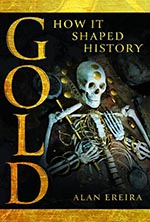 Gold: How it Shaped History was published by Pen & Sword in October 2024.
Gold: How it Shaped History was published by Pen & Sword in October 2024.
Image Sources (click to open)
Banner: Gold Nanoparticles. Image: Adobe Stock Photos.
Inset: Alan Ereira.
Other Sources (click to open)
[1] ALAN EREIRA, Gold: How it Shaped History (Pen & Sword, 2024).
[2] ALAN EREIRA, Message from the Heart of the World (Jonathan Cape, 1990).
[3] AMITAV GHOSH, The Nutmeg’s Curse (John Murray, 2021).
[4] SADEEP ARORA ET AL: ‘Gold-nanoparticle induced enhancement in growth and seed yield of Brassica juncea’ in Plant Growth’ Regulation, (Volume 66, 2012, pp. 303–310) DOI 10.1007/s10725-011-9649-z.
[5] PETER GWYNNE, ‘Microbiology: There’s gold in them there bugs’ in Nature, (Volume 495, 2013), pp. S12–S13: https://www.nature.com/articles/495S12a.
FOLLOW AND LIKE US
——————————————
——————————————
——————————————
FOLLOW AND LIKE US
If you enjoyed reading this article
Please leave a comment below.
Please also consider making a donation to support the work of Beshara Magazine. The magazine relies entirely on voluntary support. Donations received through this website go towards editorial expenses, eg. image rights, travel expenses, and website maintenance and development costs.
READ MORE IN BESHARA MAGAZINE
Bringing the Land Back to Life
Alan Ereira talks about the wisdom of the Kogi Indians and an important new UNESCO project in the Sierra Nevada de Santa Marta in Colombia
Redescovering Our Earth Emotions
Environmental philosopher Glenn Albrecht talks about climate change, solastalgia and his inspiring vision for the future
The Ecology of Money
Ciaran Mundy, Director of the Bristol Pound, explains the difference between money and real wealth
The Nutmeg’s Curse: Parables for a Planet in Crisis by Amitav Ghosh
Christopher Ryan reviews an insightful new book on climate change by the distinguished novelist
READERS’ COMMENTS

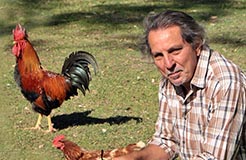
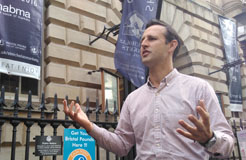

Amazing read as always. Thank you.
Some very interesting poonts about gold brought out. Time for thought Thank you
Some very interesting poonts about gold brought out. Time for thought Thank you
Keep up the great work! Thank you so much for sharing a great posts.